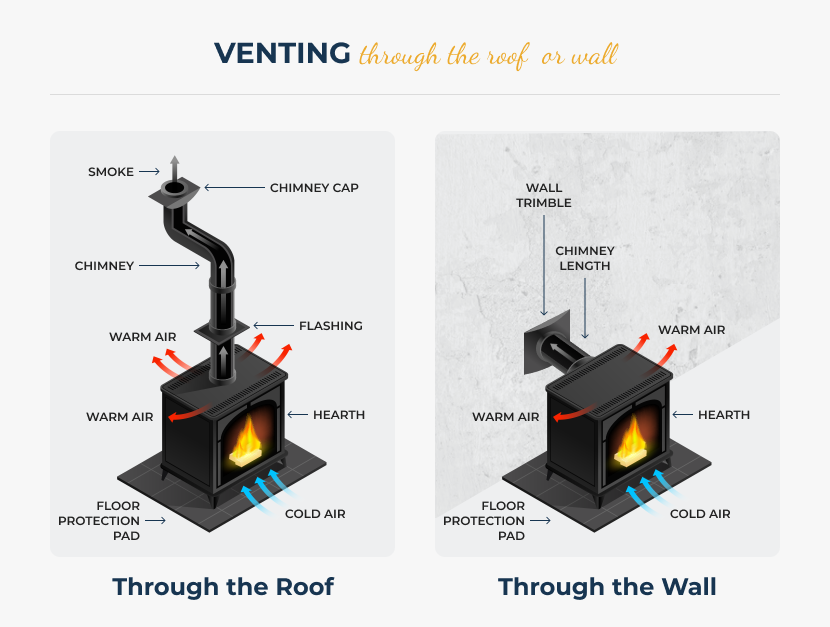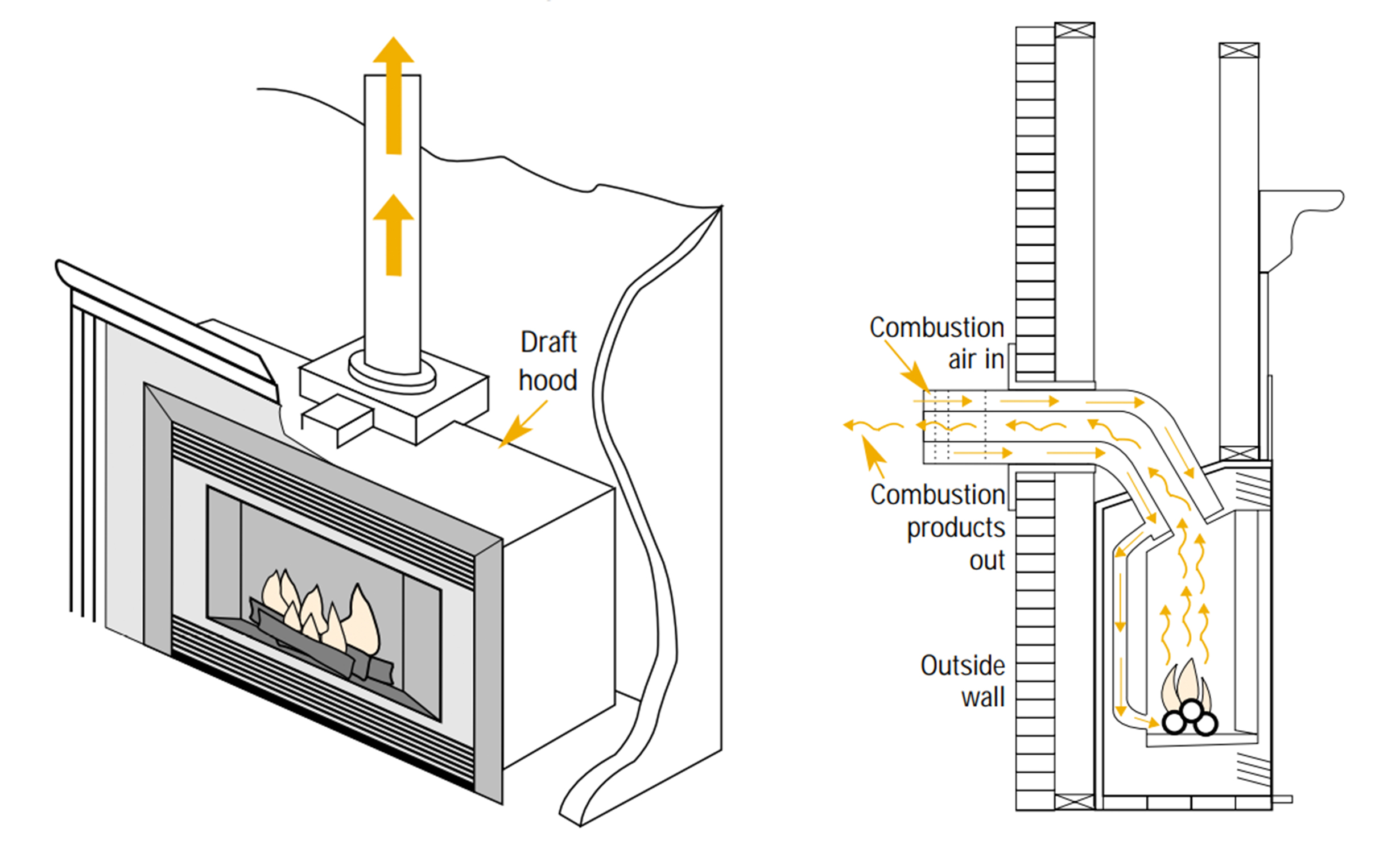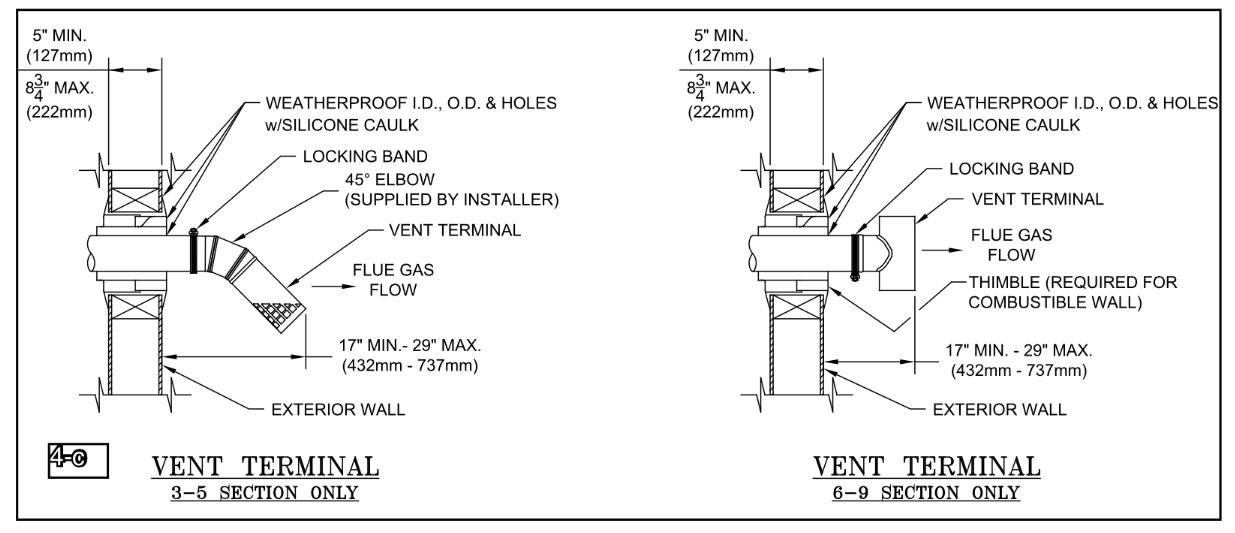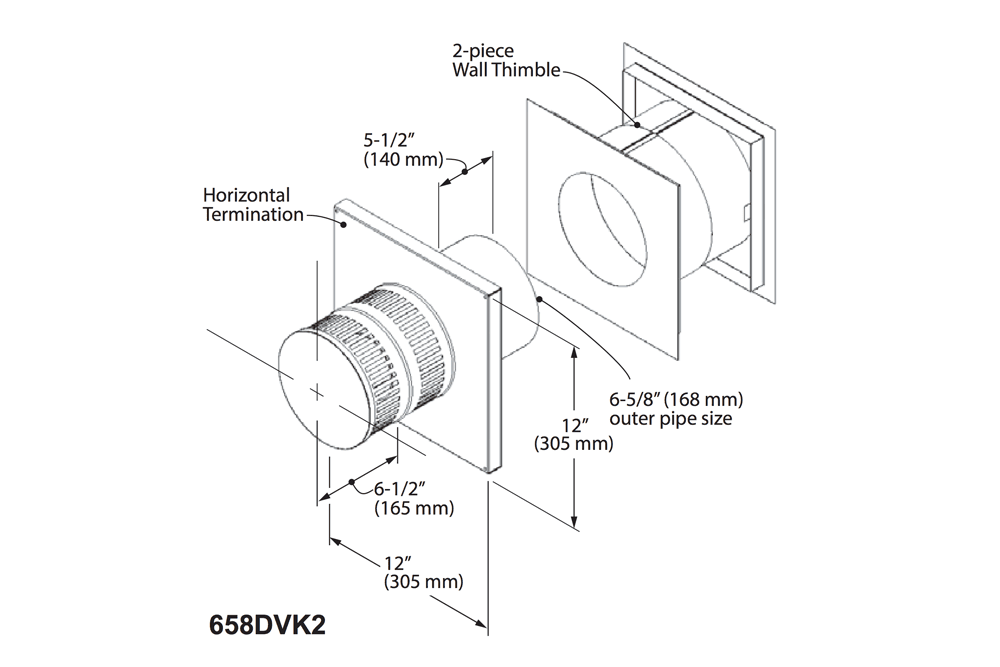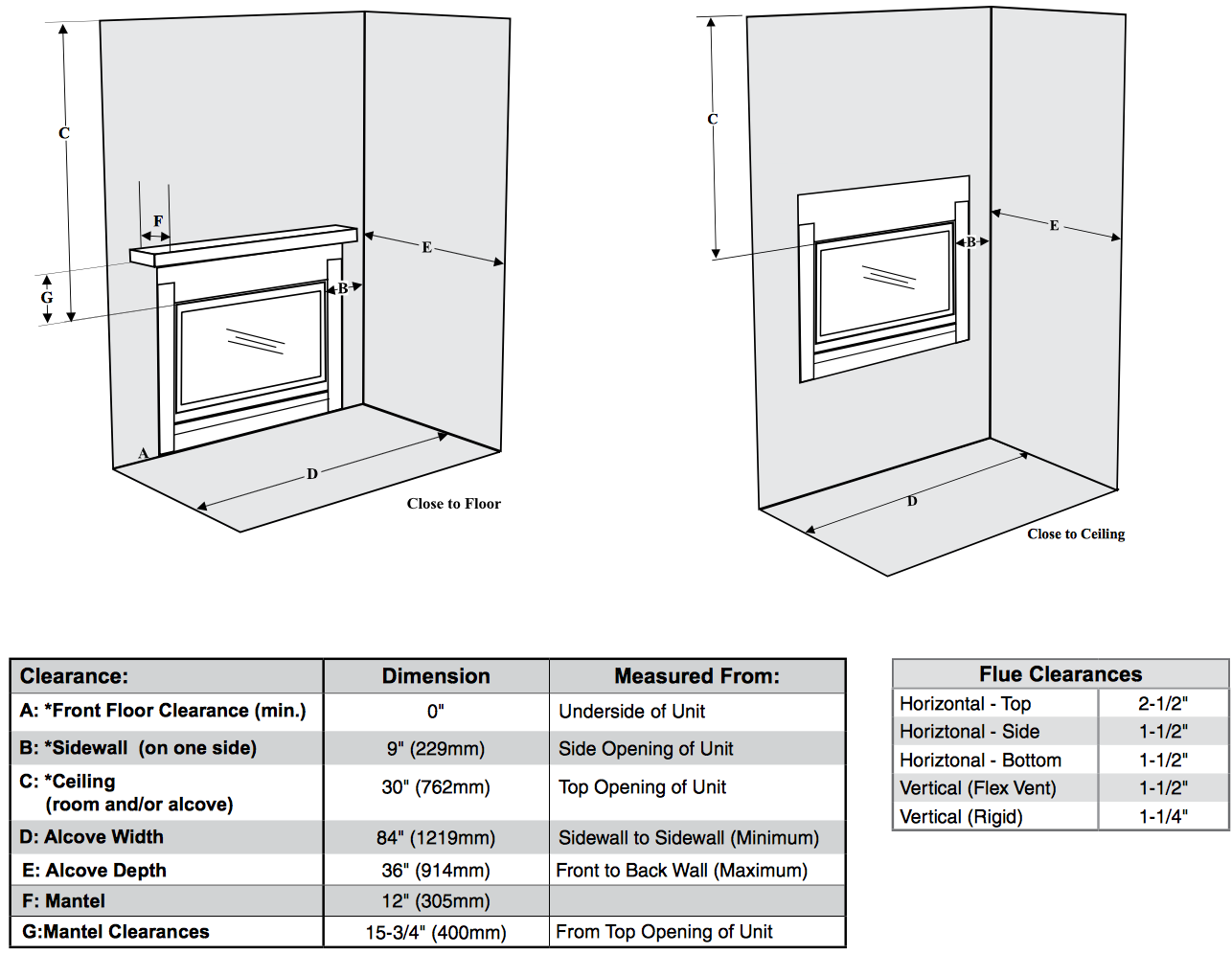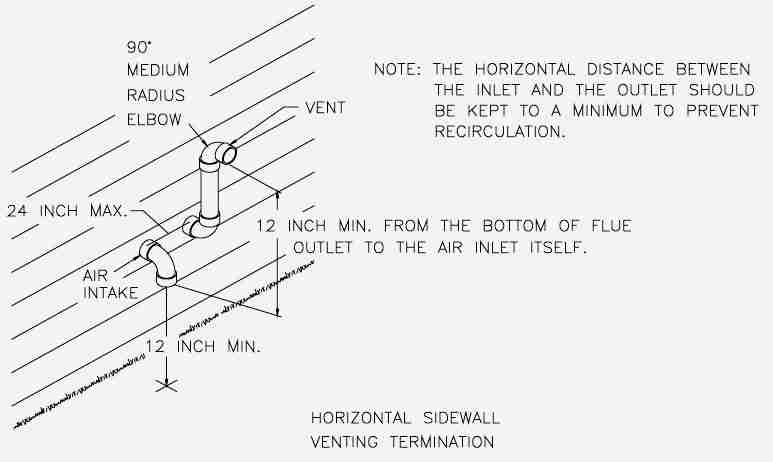Gas Fireplace Side Wall Vent Diagram
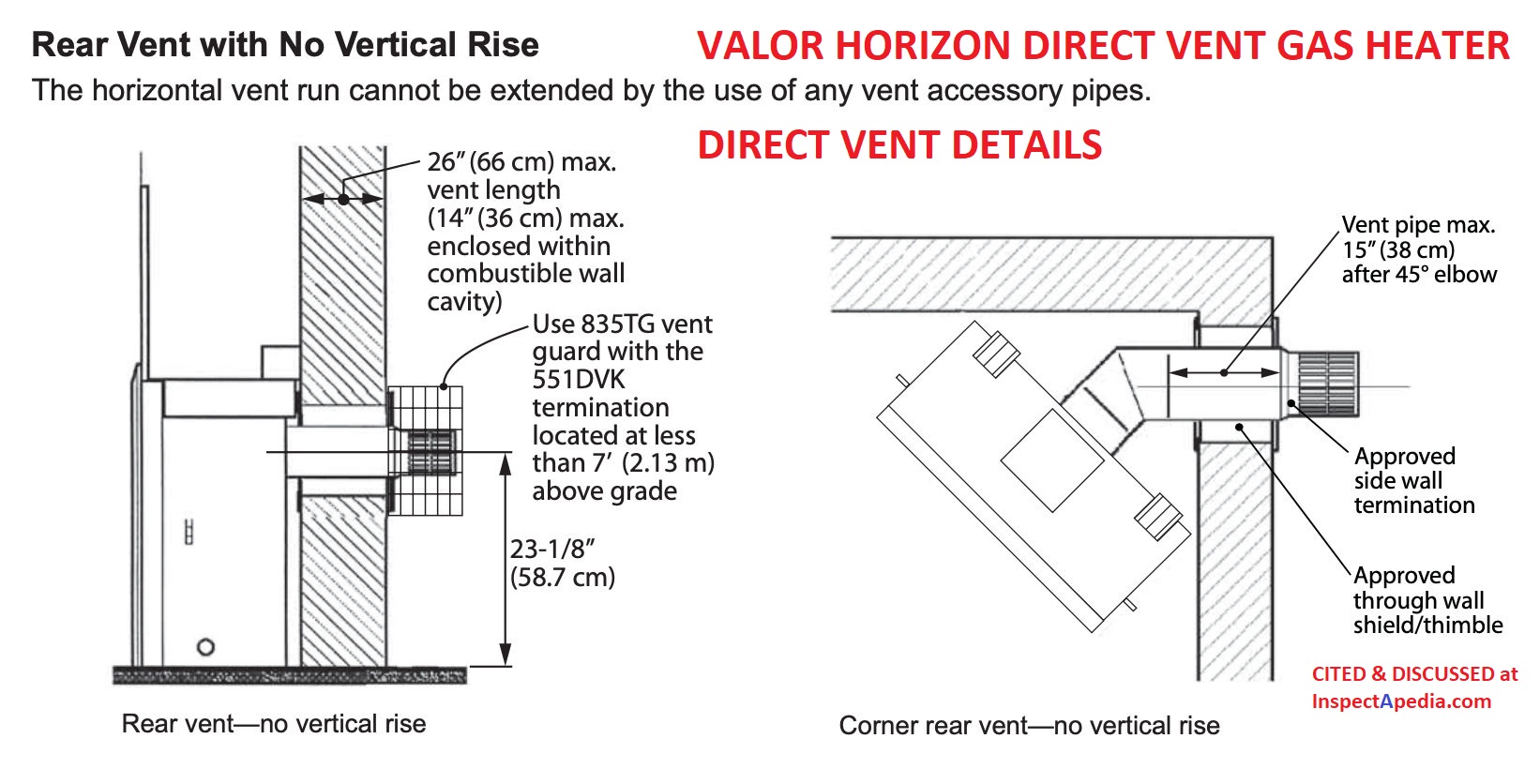
One of the most frustrating problems a homeowner with a gas fireplace can face is frequent pilot light outages. This often points to issues with the ventilation system, particularly in side-wall vented units. Understanding your vent diagram and taking a methodical approach can help you diagnose and potentially fix the problem yourself. However, safety is paramount, and knowing when to call a professional is crucial.
Understanding Your Gas Fireplace Side Wall Vent Diagram
Before we dive into troubleshooting, it's essential to understand the basic layout of your side-wall vent system. A typical diagram will show the following key components:
- The Firebox: This is where the burner and pilot light are located.
- The Vent Pipe: This is usually a double-walled pipe (to prevent heat transfer to nearby combustibles) that runs horizontally to the outside wall.
- The Termination Cap: This is the fitting on the outside wall that prevents rain, snow, and debris from entering the vent system. It often includes a screen to keep out animals.
- The Vent Connector: This is the section that connects the firebox to the vent pipe. It may have a vertical rise section before turning horizontal.
- Draft Diverter (Some models): A device that helps maintain a stable draft in the vent system, preventing backdrafting.
Keep your fireplace's installation manual handy! It contains the specific vent diagram for your model and crucial safety information.
Common Causes of Pilot Light Outages & Vent Related Issues
Several factors can cause pilot light outages related to the side-wall vent. Here are some of the most common:
- Draft Issues: Improper venting can lead to drafts that extinguish the pilot light. This can be caused by obstructions, improper vent slope, or wind conditions.
- Vent Obstructions: Bird nests, leaves, snow, or other debris can block the vent, preventing proper exhaust.
- Corrosion: Over time, the vent pipe can corrode, leading to leaks or reduced efficiency.
- Improper Venting Configuration: The vent pipe may not be installed according to the manufacturer's specifications (e.g., incorrect length, slope, or number of elbows).
- Gas Supply Issues: While not directly vent-related, a low gas supply pressure can also cause pilot light problems. (We won't focus on this here, but it's worth investigating.)
Step-by-Step Troubleshooting Guide
Follow these steps to diagnose and potentially resolve the issue. Always prioritize safety! Turn off the gas supply to the fireplace before performing any maintenance.
Step 1: Visual Inspection of the Vent Termination
First, go outside and inspect the vent termination cap.
- Check for obstructions. Is the screen blocked with leaves, snow, or a bird's nest? Carefully remove any debris. Use a brush or vacuum cleaner extension to reach deep inside if necessary.
- Inspect for damage. Is the cap damaged or corroded? A damaged cap can allow water and debris to enter the vent.
- Look for signs of backdrafting. Soot or discoloration around the vent termination may indicate backdrafting issues.
Step 2: Inspecting the Vent Pipe Inside
Next, access the vent pipe from inside your home. This may involve removing a panel on the fireplace itself. Consult your owner's manual for specific instructions.
- Visual Check: Look for signs of corrosion, rust, or damage to the vent pipe. Pay close attention to seams and joints.
- Check for Proper Slope: The vent pipe should have a slight upward slope (usually ¼ inch per foot) from the fireplace to the termination cap. This ensures proper draft. Use a level to check the slope. If the slope is incorrect, do not attempt to correct this yourself. This requires professional intervention.
- Obstruction Check: With the gas off, use a flashlight to look inside the vent pipe as far as you can. You may need to use a flexible brush or vacuum cleaner extension to remove any loose debris. Be gentle to avoid damaging the pipe.
Step 3: Checking for Air Leaks
Air leaks can disrupt the draft and cause pilot light outages.
- Inspect the joints: Carefully inspect all joints in the vent pipe for gaps or loose connections.
- Use a smoke pencil (with caution): With the fireplace OFF, you can use a smoke pencil or incense stick near the vent pipe joints to check for drafts. If the smoke is pulled inwards, it indicates a leak. Never use an open flame near a gas fireplace.
- Seal minor leaks: For small leaks, you can use high-temperature sealant designed for vent pipes. Follow the manufacturer's instructions carefully. Larger leaks or significant corrosion require professional attention.
Step 4: Pilot Light and Thermocouple Inspection (Basic)
While not directly vent-related, a malfunctioning thermocouple can mimic vent problems by causing the pilot light to go out. Proceed with caution and only if you are comfortable working with gas appliances.
- Visual Inspection: Ensure the pilot flame is engulfing the thermocouple (a small metal rod near the pilot light). If the flame isn't touching the thermocouple, it may not be generating enough electricity to keep the gas valve open.
- Cleaning (if applicable): Some thermocouples have a small vent hole that can become clogged. Carefully clean it with a fine wire or needle. Do not enlarge the hole.
- Thermocouple Test (Advanced - Requires a Multimeter): If you have a multimeter and are comfortable using it, you can test the thermocouple's output. Consult your fireplace's service manual or online resources for specific instructions. A faulty thermocouple needs replacement.
Step 5: Checking the Gas Supply
Although we're focusing on vent issues, a weak gas supply can also cause pilot light problems. Check that the gas shut-off valve near the fireplace is fully open. If you suspect low gas pressure, contact your gas company.
DIY Fixes & When to Call a Professional
You can safely attempt the following DIY fixes:
- Clearing obstructions from the vent termination cap.
- Sealing minor air leaks in the vent pipe with high-temperature sealant.
- Cleaning a clogged thermocouple vent hole.
- Ensuring the gas shut-off valve is fully open.
However, you should ALWAYS call a qualified gas fireplace technician for the following:
- Any gas leaks detected (smell of gas). Evacuate the area immediately and call your gas company.
- Significant corrosion or damage to the vent pipe.
- Improper vent slope or configuration.
- Backdrafting issues that persist after cleaning the vent.
- Suspected problems with the gas valve or regulator.
- If you are uncomfortable working with gas appliances.
- If you are unsure about any step in the troubleshooting process.
- If cleaning and basic troubleshooting doesn’t solve the issue.
Safety Precautions
Safety is paramount when working with gas appliances.
- Always turn off the gas supply to the fireplace before performing any maintenance.
- Never use an open flame to check for gas leaks. Use a leak detection solution or call a professional.
- Wear gloves and eye protection when working with vent pipes.
- Follow the manufacturer's instructions for all repairs and maintenance.
- If you smell gas, evacuate the area immediately and call your gas company.
- Never modify the vent system in any way without consulting a qualified technician.
- Ensure adequate ventilation when working on the fireplace.
Preventative Maintenance
Regular preventative maintenance can help prevent pilot light outages and other vent-related problems.
- Inspect the vent termination cap at least twice a year (spring and fall) and clear any obstructions.
- Have your gas fireplace professionally inspected and serviced annually. A qualified technician can identify and address potential problems before they become major issues.
- Replace the vent pipe if you notice any signs of corrosion or damage.
By understanding your gas fireplace's side-wall vent diagram, following these troubleshooting steps, and prioritizing safety, you can often diagnose and resolve pilot light outages and other common vent-related problems. Remember, when in doubt, always call a qualified professional.
